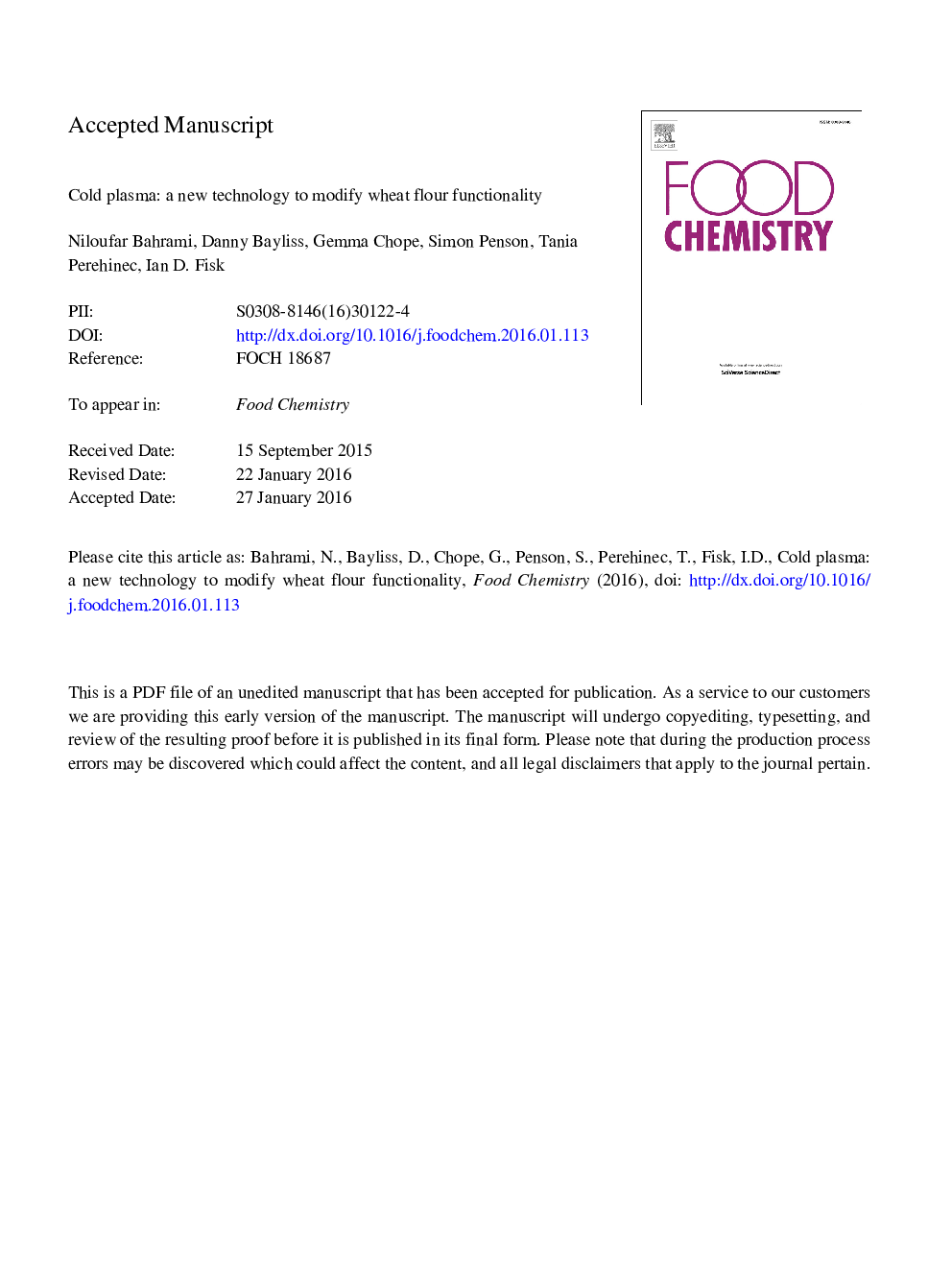| Article ID | Journal | Published Year | Pages | File Type |
|---|---|---|---|---|
| 7589197 | Food Chemistry | 2016 | 27 Pages |
Abstract
Atmospheric pressure cold plasma has the potential to modify biological chemistry and modulate physical surface properties. Wheat flour was treated by low levels of cold plasma (air, 15Â V and 20Â V) for 60 or 120Â s. There was no change in the total aerobic bacterial count or total mould count as a result of treatment. Treatment did not impact the concentration of total non-starch lipids, or non-polar and glycolipids. However, treatment did reduce total free fatty acids and phospholipids and was dose dependent. Oxidation markers (hydroperoxide value and head space n-hexanal) increased with treatment time and voltage, which confirmed the acceleration of lipid oxidation. Total proteins were not significantly influenced by treatment although there was a trend towards higher molecular weight fractions which indicated protein oxidation and treated flour did produce a stronger dough. This study confirms the potential of cold plasma as a tool to modify flour functionality.
Keywords
Related Topics
Physical Sciences and Engineering
Chemistry
Analytical Chemistry
Authors
Niloufar Bahrami, Danny Bayliss, Gemma Chope, Simon Penson, Tania Perehinec, Ian D. Fisk,
